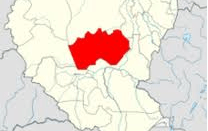In June this year word began to creep out of the South Kordofan region of Sudan about a campaign of ethnic cleansing of tribes aligned with Southern Sudanese separatists. The Sudanese army swept into towns and villages ostensibly to arrest or disarm Nuba rebels, but effectively carried out a campaign of ethnic cleansing.
The UN High Commissioner for Human Rights just released a report detailing alleged incidents. It basically confirms what we have known for a while: that people were targeted based on their ethnicity and that the Sudanese government is to blame. Here are just a few of the allegations of war crimes and crimes against humanity contained in the report:
Targeting families based on their ethnicity.
Residents of Al Fayed village in Al Rashad locality reported that members of the Tagoi tribe of the Nuba ethnic group were targeted in attacks by the SAF and PDF elements on 14 June. An alleged victim reported that seven members of his family, all of the Tagoi tribe, were killed in the attack. Twelve of his relatives were reportedly arrested, including the traditional leader (sheikh) of the Tagoi tribe. The sources reported that a total of 24 houses were burnt down during the incursion. Although the family members were longstanding members of the Democratic Unionist Party (DUP), they had recently joined the SPLM prior to the May 2011 state-level elections.
UNMIS Human Rights also received information that on 15 June 2011, eight civilians of Nuba descent were allegedly killed while attempting to retrieve some of their belongings from Al Gardut neighbourhood of Kadugli Town. Another source reported that four young males of the Nuba ethnic group were allegedly killed near the Kadugli airport after being arrested at a checkpoint attempting to leave the state.
On 22 June 2011, an eyewitness saw SAF elements fill a mass grave in Al Gardut neighbourhood in Tillo with dead bodies. The eyewitness reported that SAF elements transported the bodies to the site, dumped them in the grave and used a bulldozer to cover the grave.
Bombing villages–possibly with Chemical weapons
On 22 June 2011, UNMIS Human Rights received unconfirmed reports on the use of chemical weapons by the SAF against civilians on 12 June in Julud, Shivi village and Salara areas, following aerial assaults on the town and mountains where civilians had reportedly been seeking refuge.
Since the eruption of the conflict, the SAF regularly conducted aerial bombardments in the Nuba Mountains and in several towns and villages populated by the Nuba. The aerial bombardments have resulted in significant loss of life, destruction of properties, and massive displacement. UNMIS Human Rights has received photographs allegedly documenting the results of aerial bombardment. The photographs include mangled and mutilated bodies of civilians, some cut into halves, including women and children. The authenticity of the photographs has not been verified.
Attacking a church
Churches and their members, many of whom are Nuba, have allegedly been subject of targeted attacks by the SAF and Government of Sudan police since the violence erupted in Southern Kordofan. On 6 June 2011, the Anglican Church and the offices of the Sudan Clerics Association in Kadugli were looted and vandalized. Members of a church in Kadugli reported to UNMIS Human Rights that on 7 June the SAF and Government of Sudan police had attacked a church containing more than 100 civilians seeking refuge. The church was looted by the SAF and police and sustained substantial damage from gunfire, although no civilian injuries were reported. The majority of the civilians that had sheltered at the church subsequently sought refuge in the UNMIS protective perimeter.
Forced displacement.
The conflict in Southern Kordofan has led to massive displacement of civilians. According to figures from the Sudan Red Crescent Society (SRCS), the Humanitarian Aid Commission (HAC) and UN agencies in Kadugli, at least 73,000 people were initially displaced throughout central and eastern localities of Southern Kordofan as a result of the fighting and the aerial bombardments. Some of these people have now returned to their homes. Most of those displaced sought refuge in church and hospital compounds as well as at the UNMIS protective perimeter and its immediate vicinity.
UNMIS Human Rights Officers were told by residents of Umber village in Al Fayed that militia had forced them to evacuate their homes, which were looted and systematically burnt, after being warned to leave the areas on 12 June. Many civilians from the village escaped to Abu Karsholla.
By the morning of 20 June 2011, about 11,000 IDPs had gathered in and around the vicinity of the UNMIS protective perimeter, most of whom had come from Kadugli. In an attempt to force these IDPs to return to their homes, it is believed that National Security agents verbally intimidated the IDPs. The Government provided transport to the IDPs to return to their places of origin.
I will leave it to the lawyers to judge whether or not these incidents rise to the level of ethnic cleansing, but it certainly passes the duck test.
